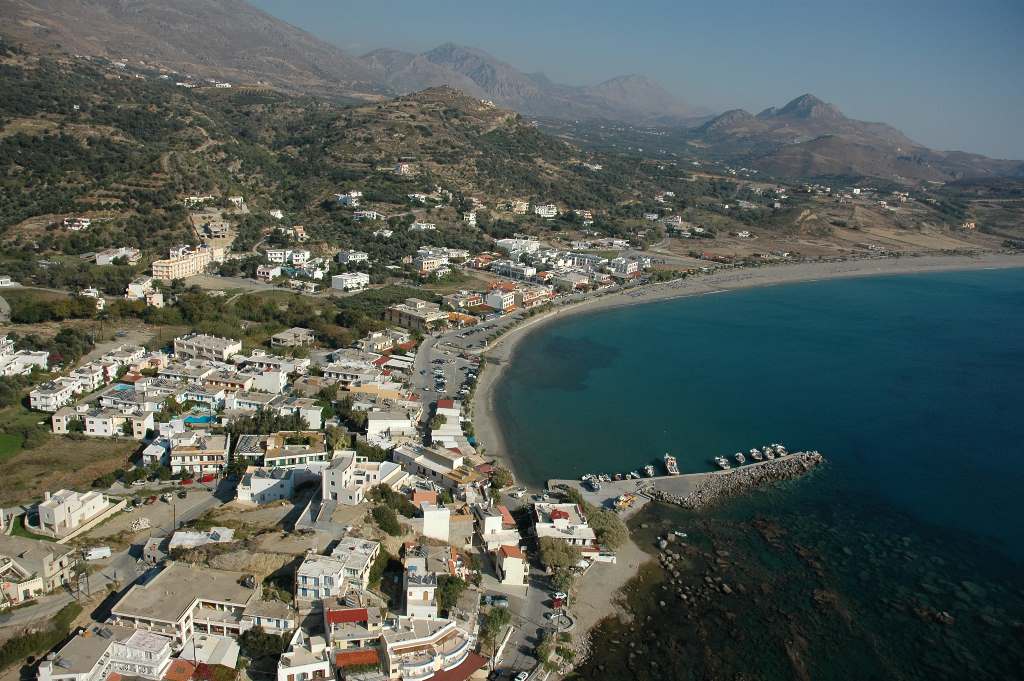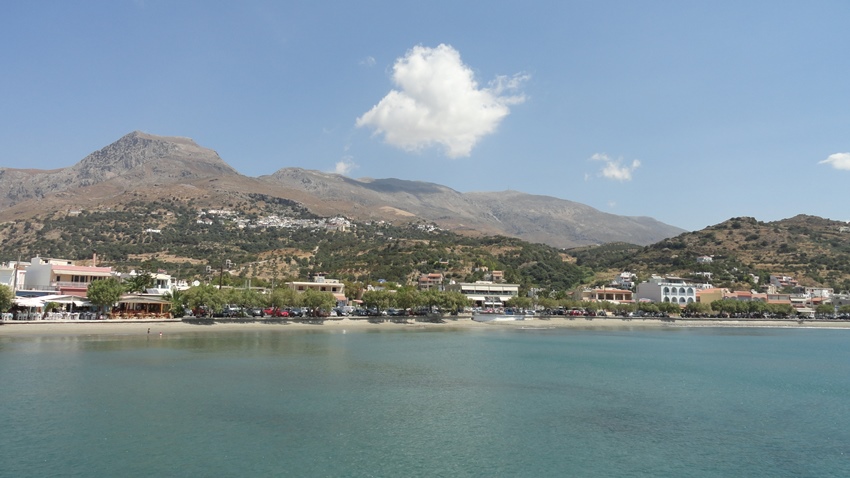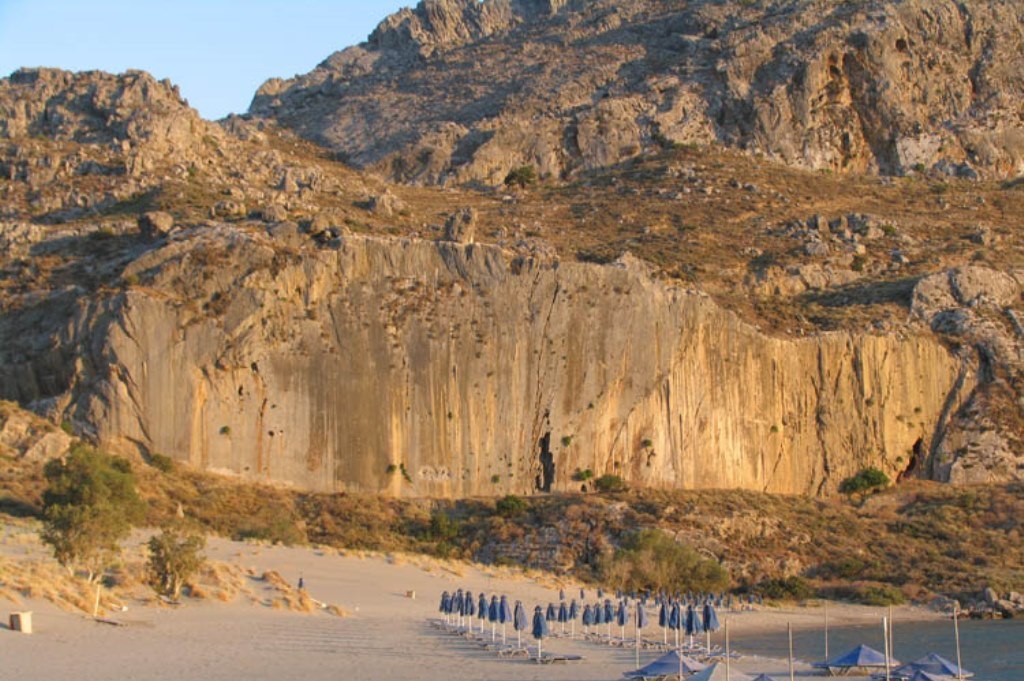Plakias
Plakias is a seaside tourist settlement, and also a beach, of Sellia Community of Agios Vasileios Municipality, in the Regional Unit of Rethymno at Southern Crete. It is located 35km away from Rethymno in a fertile plain formed by the Kotsifos River, which has water all year round. The area is also crossed by the beautiful gorge of Kourtaliotis. The settlement was created at around 1830 by fishermen from Sellia of Rethymno. The first reference to it is in the Greek census of 1961, when it had 6 residents. Back in the 60’s, Plakias beach was a very popular destination for the hippies and in the 70’s it experienced a very large touristic development. It is also a popular destination for water sports enthusiasts. Today most of the houses are located near the small port of Plakias, embracing the large crescent shaped beach.

History of Plakias
The village seems to have been inhabited since antiquity. Plakias is considered by some to be the ancient city of Finikas Lapaion. Objects from Roman times have been found in Plakias, while a necropolis of 5 acres was found at Zoodohos Pigi, but with the slabs removed from the tombs. Scattered slabs have been found on the slope and according to one hypothesis, the large number of them gave the name Plakias (Plaka-slab) to the area. As, however, Kostis El. Papadakis notes in his ‘’Toponymiko’’, the settlement owes his name to the large submarine slabs that extend to the land, and are clearly visible below the sea surface. According to another hypothesis, the name comes from the fact that the village was built on a large slab.

Plakias beach
The main beach of Plakias is located about 200m from the village and it extends to a length of almost 1,5km. It is a well-organized sandy beach, with shallow waters, ideal for families with children. Along the beach there is a coastal road with taverns and small hotels, while on the beach there are tamarisk trees, umbrellas, water sports, beach volley courts, canteens, locker rooms and showers. The eastern part of the large beach of Plakias is called Paligremnos. The beach is sandy and well organized, next to hotels and taverns. Characteristic features of Paligremnos are the nearby huge vertical rocks that rise to great heights and are a popular climbing field. Every full moon from September to January, a strange phenomenon occurs in Paligrremnos. The moonlight is reflected by the tall rocks onto the sea. Thus, many large squid come out the edge of the beach and being collected by the villagers.

Sightseeing
In Paligremnos there are mine shafts that were used for the transport of coal. At this point, also called Gonates, there is a huge steep cliff. It is said that Digenis Akritas (a folk song hero) kneeled and drank water from a nearby spring, one of the many in the area. Sights of Plakias are also the old mill, a few km outside the village, as well as the church of Zoodochos Pigi, which was built on the ruins of an older building. Other beautiful beaches near Plakias are Damnoni, Ammoudi, Ammoudaki, and Souda. Some other beaches, a little further away, are Triopetra, Polirizos, Korakas and Schoinaria, a beach popular to those who like diving. A boat also leaves Plakias for the famous lake Preveli.

Events
There are many traditional festivals in Plakias, such as the shearing of sheep, the celebration of fisherman and raki in which you can participate if you happen to be at the area. In Plakias you will find everything you need since today hotels, cafes, taverns, rooms to let, shops, organized beaches and post office are available. In Plakias you will also find many activities to try such as sailing, wind-surfing, water skiing, kiteboarding, diving and more.
